For years, social media has become an essential platform for businesses to connect with customers and promote their products or services. A staggering 91.9% of marketers in the US use social media for their businesses.Thus, as a social media marketer, it is crucial to understand your efforts’ impact and measure your campaigns’ effectiveness. One of the key aspects of evaluating social media success is measuring social media reach.

Do you want to assess your social media reach and understand how many people are exposed to your content? Do you want to gauge the effectiveness of your marketing strategies? Okay, then, without further ado, we will explore below the importance of measuring social media reach and practical tips on how to do it quickly and effectively in 2025.
The easiest way to manage and grow your social channels.
Try ContentStudio for FREE
The importance of social media reach
Measuring social media reach allows you to assess the scope and impact of your social media efforts. It provides valuable information to assess the effectiveness of your content, campaigns, and overall social media strategy. By understanding your reach, you can identify trends, assess the performance of different platforms, and make data-driven decisions to optimize your marketing efforts.

Knowing your social media reach also helps you answer important questions such as:
- How many people are being exposed to my brand on social media?
- Which platforms are driving the most engagement and reach for my business?
- Are my social media efforts reaching the target audience effectively?
- How does my social media reach compare to competitors in my industry?
By clearly understanding your social media reach, you can refine your marketing strategies, target the right audience, and allocate your resources effectively.
Key metrics to measure social media reach
To measure the reach effectively, you must focus on key metrics that provide insights into your content’s exposure and engagement levels. Let’s discover the essential metrics to measure social media reach in 2025.
Related Read: 16 Social Media KPIs You Need to Track to Measure Success
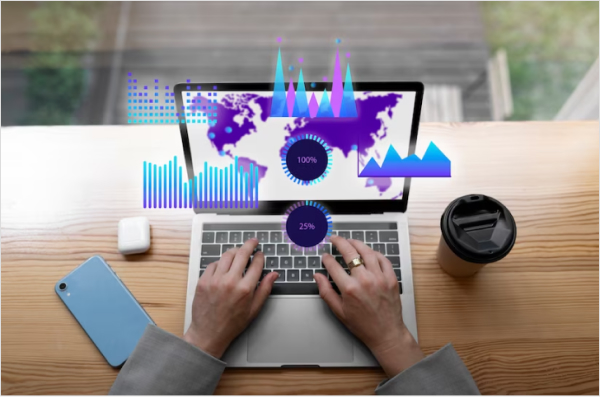
1. Follower count
The number of followers or subscribers on your social media accounts is a fundamental metric to assess your reach. It represents the audience who has opted to receive updates from your brand. Of course, follower count alone doesn’t provide a complete picture of your reach.
However, follower count serves as an important baseline metric. By tracking this metric over time, you can identify growth trends and evaluate the impact of your content and campaigns on attracting new followers.
Related Read: How to Get More Instagram Followers in 2025
2. Impressions for social media reach
Impressions measure your content’s potential reach, indicating how often it appeared in users’ feeds or timelines. They give an idea of the exposure your content receives. Analysis of impressions can assess which types of content or posts generate higher visibility and refine your content strategy accordingly.

3. Engagement rate
The level of interaction and involvement your audience has with your social media content is also one of the key metrics in measuring social media reach. Likes, comments, shares, and clicks are just some actions you must watch out for.
When you track engagement rates, you will get insights into how effectively your content resonates with your audience and encourages them to take action. A higher engagement rate indicates a more engaged and responsive audience.

4. Reach and impressions by platform
Different social media platforms have varying algorithms and user behaviors. It’s important to measure reach and impressions on a platform-by-platform basis. This analysis lets you understand which platforms perform best so you can adjust your strategies accordingly.
For example, if you notice that your reach and impressions are higher on Instagram compared to Twitter, you can focus more resources on Instagram to maximize your reach.

5. Referral traffic
Next is the number of users who visit your website or landing page through social media platforms. Tracking the referral traffic amount helps determine how effectively your social media efforts drive traffic to your website. This metric is particularly useful if you aim to generate leads or conversions through your social media channels.
Related Read: Guide to Maximizing Your Reach through Social Media Management
Tools to measure social media reach

Now that we understand the key metrics, let’s explore some tools and techniques to help you gather the necessary data.
1. Social media analytics platforms
Social media analytics platforms such as ContentStudio provide comprehensive insights into your social media performance. Such tools enable you to monitor key metrics, analyze audience demographics, and generate detailed reports. Using these platforms enables businesses to streamline the process of measuring social media reach and gain actionable insights to improve their strategies.
2. Native analytics tools
Aside from 3rd-party tools, most social media platforms offer their own built-in analytics tools. These tools provide valuable data about your audience, reach, impressions, and engagement.

For example, Facebook Insights provides detailed metrics about your Facebook Page, while Twitter Analytics offers insights into your Twitter account’s performance. Utilize these native analytics tools to gather platform-specific data and understand the performance of your content.
Related Read: A Complete Guide To Facebook SEO In 2025
Social Media Analytics
Fine-tune your social media strategy for success with in-depth analytics and white-labeled reports.
Get Started for FREE
3. URL tracking and UTM parameters
URL tracking and UTM (Urchin Tracking Module) parameters are some techniques that allow you to track the source of traffic and measure the effectiveness of your social media campaigns. You can identify which social media posts or campaigns drive traffic to your website by appending UTM parameters to your URLs. Tools like Replug make it easy to create custom UTM parameters and accurately track your social media campaigns’ performance.
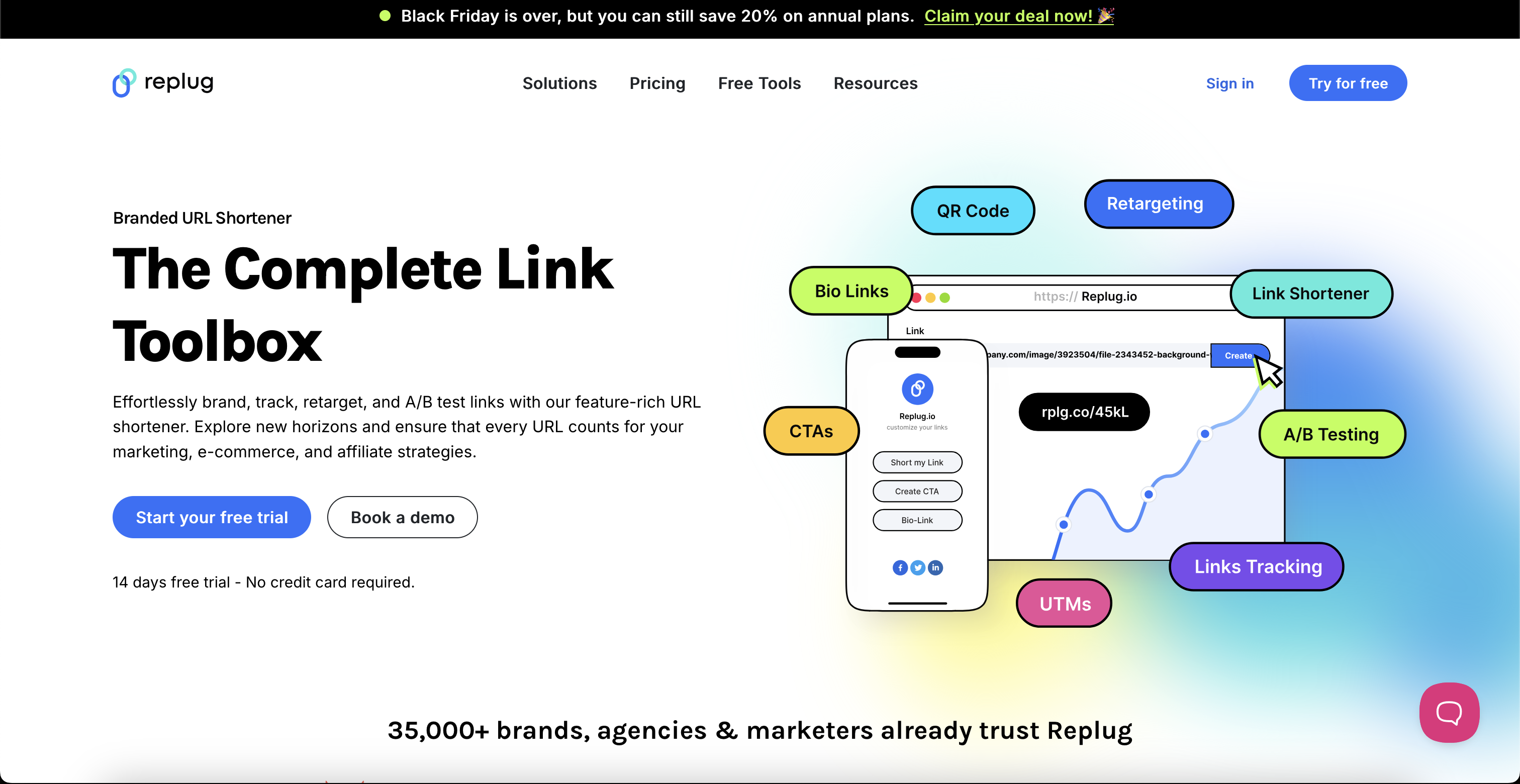
4. Usermaven
Usermaven is a tool that provides detailed insights into your website’s performance, including traffic sources, user behavior, and conversions. By integrating Usermaven with your social media efforts, you can measure the impact of social media on your website’s traffic and conversions.
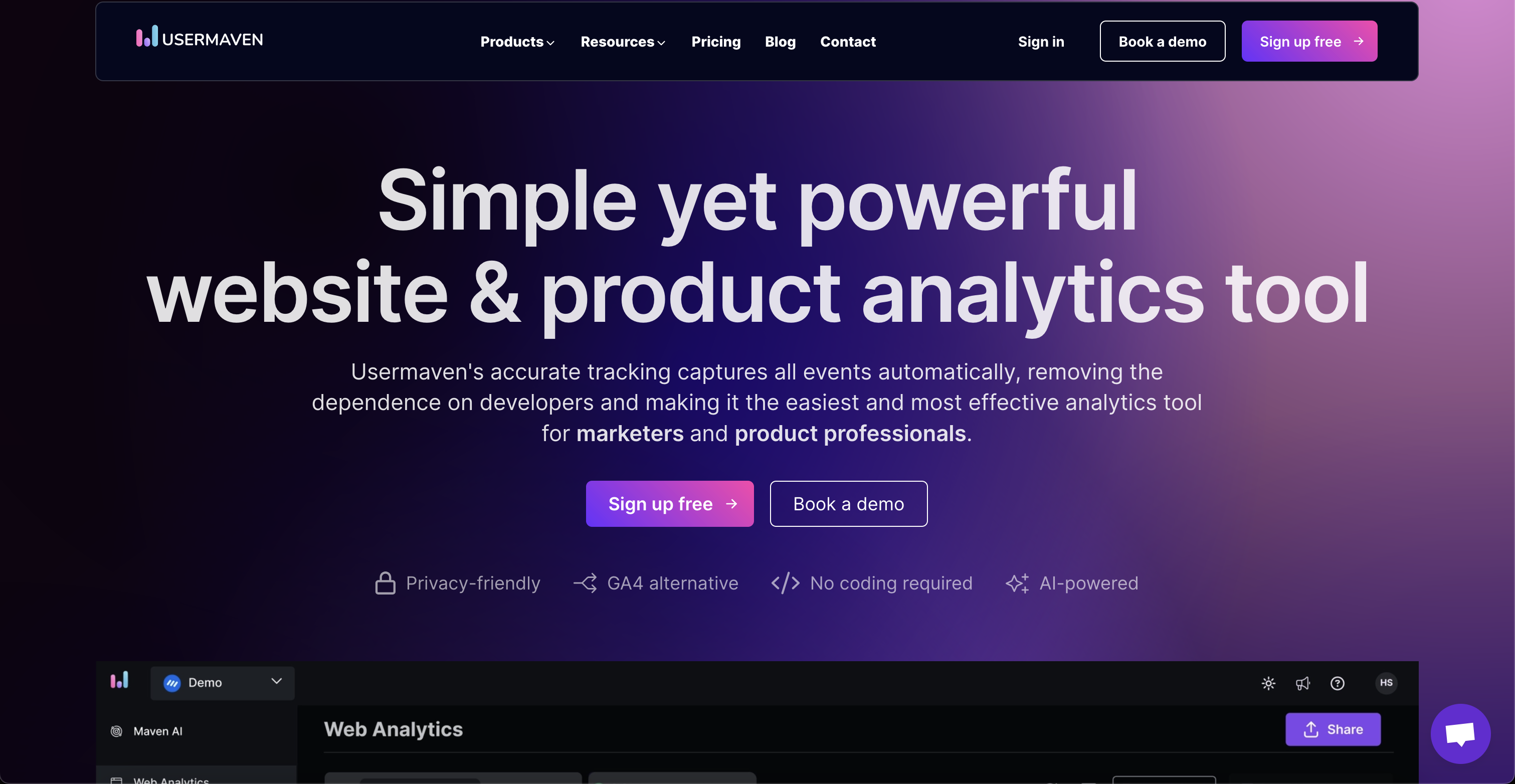
Related Read: 12 Best Social Media Analytics Tools For Marketers
How to use social media reach data for decision making
Now that you have collected data on your social media reach, it’s crucial to leverage this information to make informed decisions and optimize your marketing workflow and efforts. Here are some ways to use social media to reach data effectively:
1. Content strategy optimization
Analyze your content’s reach and engagement metrics to identify the posts that resonate most with your audience. Use this information to fine-tune your content strategy and come up with more relevant and engaging content. For example, if video posts receive significantly higher reach and engagement than text-based posts, you can prioritize video content in future marketing campaigns.

2. Audience insights
Examine the demographics and interests of your social media audience to gain insights into who is engaging with your content. This information can help you tailor your messaging, targeting, and overall marketing strategies to better resonate with your audience.
For example, if you discover that your most engaged audience comprises young professionals interested in technology or computers, you can adjust your content to this niche, such as creating a blog on the most popular online computer programming degrees. Understanding your audience enables you to craft more personalized and relevant content, increasing engagement and reach.
Content Discovery
Find the top-performing content on the web and never run out of social media post ideas.
Get Started for FREE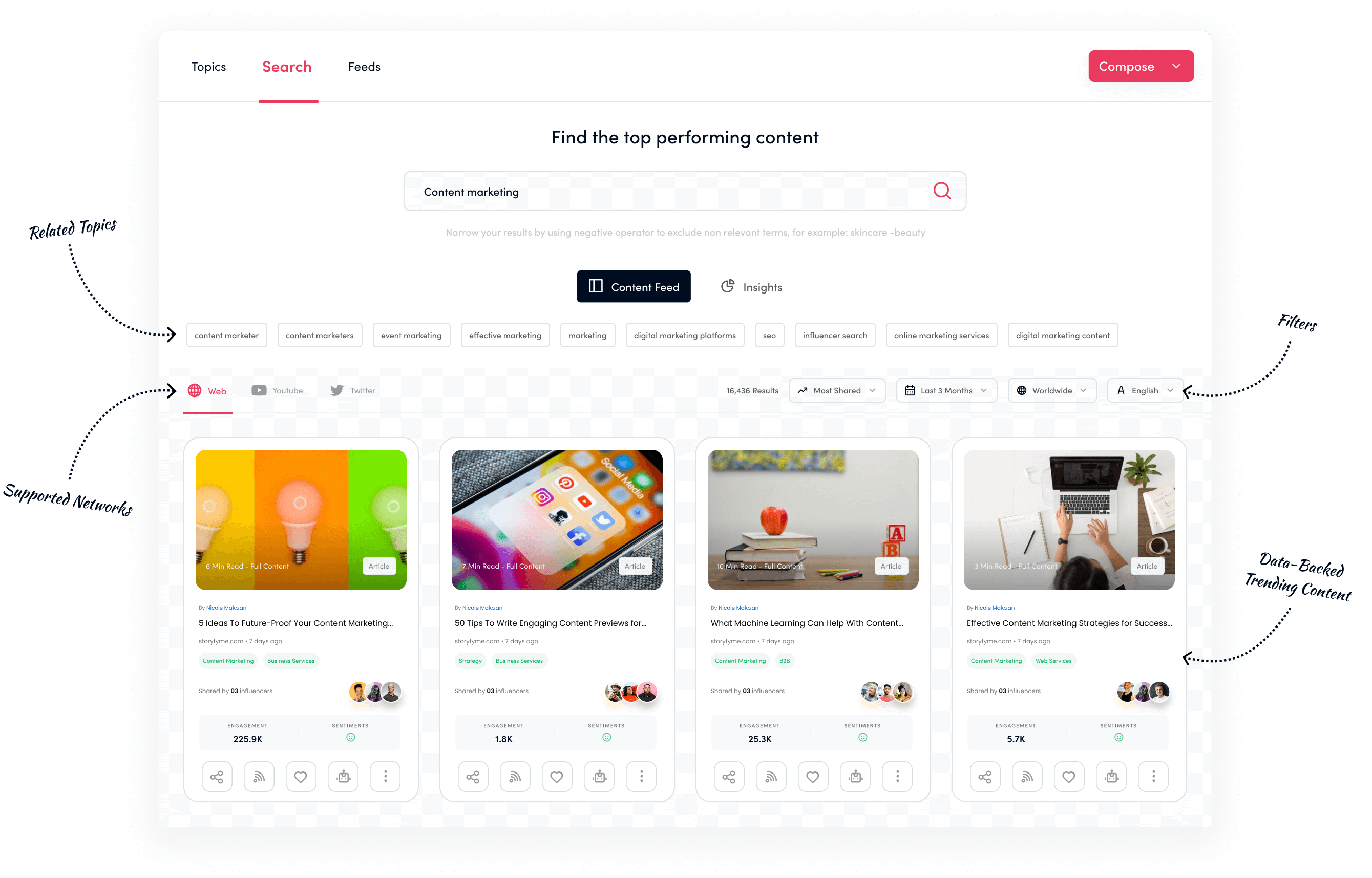
3. Campaign evaluation
Measuring reach is crucial for evaluating their success when running social media campaigns. By comparing different campaigns’ reach and engagement metrics, you can determine which techniques and strategies are most effective in reaching your target audience.
This information enables you to optimize future campaigns and allocate resources more efficiently. For example, if you notice that influencer partnerships consistently generate higher reach and engagement, you can invest more in collaborating with influencers in your industry.
4. Influencer partnerships
Social media reach data can help you identify influencers who are aligned with your branding and have a significant reach within your target audience. Analyzing potential influencers’ reach and engagement metrics helps make informed decisions about partnerships likely to generate the highest impact. Look for influencers whose reach and engagement align with your campaign objectives and leverage their influence to expand your brand’s reach and connect with new audiences.
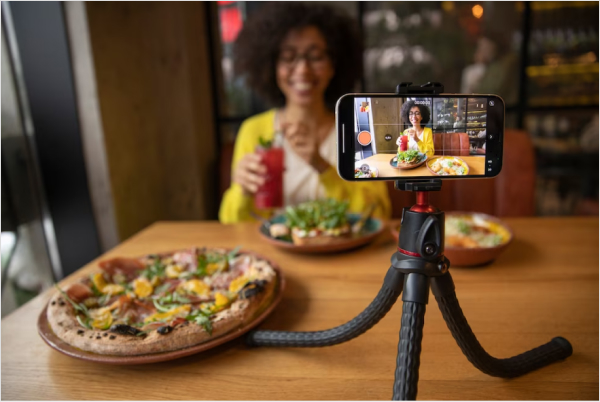
Conclusion
Measuring social media reach is vital to a successful digital marketing strategy in 2025. By understanding the scope and impact of your social media efforts, you can make data-driven decisions to improve your marketing campaigns. Lastly, with a systematic approach to measuring social media reach, you can enhance your online profile, engage with your target audience, and drive results for your business.
Frequently Asked Questions
How often should I measure social media reach?
It is recommended to measure social media reach regularly, depending on the frequency and scale of your social media activities. Weekly or monthly measurements are common but ultimately depend on your goals and available resources. Monitoring your reach consistently allows you to track trends, make timely adjustments, and evaluate the impact of your efforts.
Can social media reach be improved organically?
Yes, social media reach can be improved organically through strategic content creation, engagement with your audience, and consistent posting. By understanding the behavior and preferences of your target audience, you can craft compelling content that encourages engagement and sharing. Additionally, actively participating in relevant conversations, responding to comments, and collaborating with industry peers can help expand your reach organically.
Is social media reach the only metric I should focus on?
While social media reach is an important metric, it is not the only one to consider. To understand your social media performance, it is essential to assess other metrics like engagement rate, click-through rate, conversions, and audience demographics. These metrics provide valuable insights into your content’s effectiveness, audience interactions, and the impact on your business goals.
What are the most popular social media platforms for business in 2025?
In 2025, the most popular social media platforms for business include Facebook, Instagram, Twitter, LinkedIn, and YouTube. These platforms offer diverse audience demographics and engagement opportunities, making them effective channels to reach the businesses’ target audience as well as promote their products or services. However, it’s important to analyze your target audience and industry to determine the best platforms that align with your goals.
